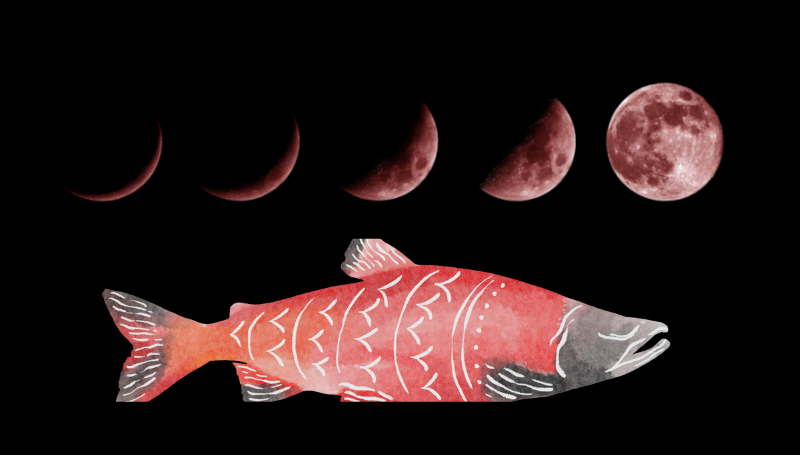A moon-inspired menu
(YES! Magazine | Valerie Segrest) Earth’s first satellite. For the entirety of human existence, we have organized our lives around its orbit.
What’s a moon-inspired menu
Lunar calendars have been carved into animal bones and cave walls. Entire landscapes were constructed and dedicated to the movement of the moon dating back 10,000 years in Mesolithic Scotland. Ancient hunters, harvesters, and farmers carefully surveyed the waxing and waning ways of the moon and its close correlation with fertility, rainfall, tides, game migration, and harvests. This information was interpreted into strategies necessary for survival. Our moon has mentored humanity for centuries, and the Ancestors formalized time from its steady power.
In these ancient traditions we receive the gifts and stories of 13 moons that make up a calendar year. All Indigenous Peoples named their moons for locally abundant food, distinct weather, or important cyclical changes.
Following a lunar-inspired menu means eating seasonal and hyperlocal ingredients
Where I live in the Pacific Northwest, fall begins with the Moon of the Silver Salmon, and Elk Mating Cry, Falling Leaves, and Dog Salmon follow. We eat Coho and Chum salmon, crisp-bodied shellfish, hazelnuts, Ozette potatoes, rose hips, and cranberries. These foods are at their peak nutrition and flavor during their moons. Syncing our lives and menus with the energy of the moons leads us to be more present in nature and to better engage with our own wisdom and the world in which we live.
Winter salmon moon chowderingredients
Serves 6
3 slices bacon, diced
1 Walla Walla onion, diced
1 clove garlic, diced
3 green onions, chopped
3 Ozette or golden potatoes, diced
3–4 cups low-sodium chicken stock
12 ounces smoked salmon
In a large soup pot, sauté bacon until just crisp, about 3 minutes. Add onions, garlic, and green onions and continue cooking until onions are translucent. Add potatoes and chicken stock. Bring to a boil for a few minutes. Lower the heat and simmer for 10 minutes. Add salmon and cook an additional 8–10 minutes. Serve hot.
The 13 Moons of the Coast Salish
Moon of the Windy Time (January/February)
Moon When the Frog Talks (Late February/March)
Moon of the Whistling Robins (April)
Moon of the Digging Time (May)
Moon of the Salmonberry (June)
Moon of the Blackberry (July)
Moon of the Salal Berry (August)
Moon of the Silver Salmon (September)
Moon of the Elk Mating Cry (Late September/Early October)
Moon of the Falling Leaves (October)
Moon of the Dog Salmon (November)
Moon to Put Your Paddles Away (Late November/Early December)
Moon of the Sacred Time (Late December/January)
About the author
Valerie Segrest (Muckleshoot) is a nutrition educator who specializes in local and traditional foods. She is regional director for Native Food and Knowledge Systems for the Native American Agriculture Fund.
Source: YES! Magazine
You may also like:




